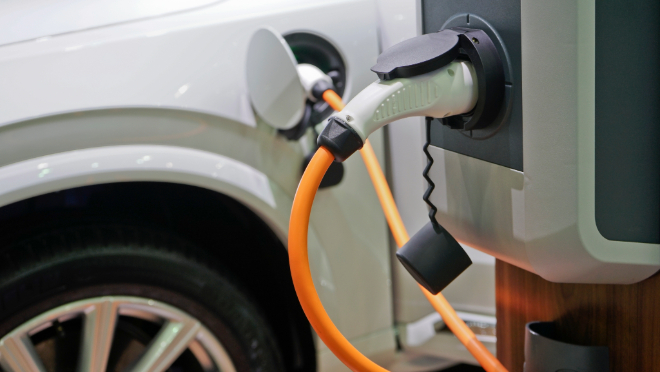Industry resources for EV Level 2 charging

Level 2 electric vehicle (EV) charging will charge an EV’s battery at a rate of about 30 km per hour. In other words, charging for one hour at a Level 2 station provides an EV with enough charge to travel about 30 km.
While some EV owners are able to install a Level 2 charger at home, many others will rely on readily available access to public and communal chargers to make an EV a feasible choice.
In B.C., public Level 2 chargers are found at shopping malls, grocery stores, restaurant districts, entertainment venues, civic facilities and public pay parking lots in downtown areas.
Adding more public Level 2 EV chargers in locations near where current or potential EV drivers live or work will be essential to the continued adoption of EVs.
Build a public Level 2 charging station on your property
Are you a municipality, First Nation, local government or commercial property owner that’s thinking of building a Level 2 charging station on your property? We've been piloting and building EV charging stations since 2013, and we've learned at lot. We're sharing our knowledge to help improve this critical public infrastructure in B.C.
Natural Resources Canada and CleanBC Go Electric offer programs that provide capital funding for building EV charging stations, but the site selection, design, construction and operations are up to you.
If you're ready to begin your charging station plan – from choosing a location to deciding on the equipment and software – our resources can help you along the way.
Follow our Level 2 EV charging station guide
We're supporting the growth of B.C.'s public Level 2 charging network by sharing best practices in our Level 2 charging station guide. The guide provides information that'll help you create safe, usable and reliable EV infrastructure that adheres to regulatory standards and works effectively for those who use it, and those who manage it.
- BC Hydro's Level 2 charging station guide [PDF, 527 KB] (Last updated November 2020)
In addition to the guide, we also support EV charging by identifying system upgrade requirements, providing guidance on eligible EV charger models, verifying project compliance, reimbursing partners based on NRCan’s contribution and encouraging Indigenous participation by assisting with affordability.
What's in the guide?
Public Level 2 charging stations have two main components: hardware and software. The hardware is the physical charger and cables. The software includes the network management of networked chargers, and the EV energy management system (EVEMS) which optimizes the charging of multiple vehicles simultaneously at one location.
The Level 2 charging station guide linked above contains helpful information including:
- Charging station placement and design
- Equipment and equipment vendor options
- Network types and EVEMS options
- Installation guidelines
- Operation and maintenance
- Case studies
Other Level 2 charging resources
- High-voltage utility connection (HVUC) report [PDF, 137 KB]
This case study demonstrates how to eliminate key barriers to EV adoption in urban centres. This report details a project, which was completed in June 2020, where 60 Level 2 chargers were designed, fabricated, assembled and commissioned in urban centres to eliminate a key barrier to EV adoption. The chargers were produced, and later installed at customer sites at reduced costs because the usual transformer and associated wiring weren't required.